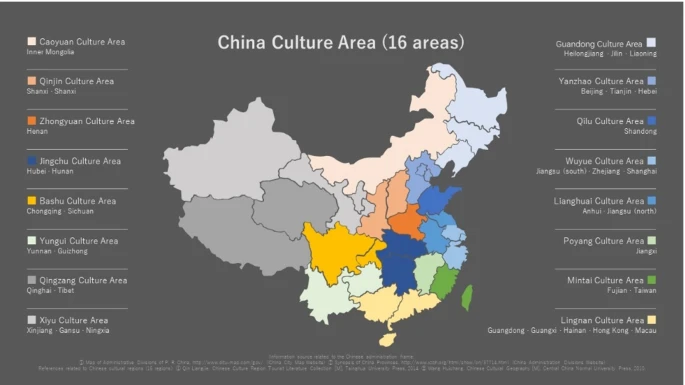中国是有其深厚王国传统的,以宋代路一级行政区划分割王国头衔非常不恰当,是舍近求远的。更何况“唐”、“宋”以及之前王朝的国号多来源于春秋战国时期的王国。建议制作组取材“秦、晋,郑、韩、魏、卫,齐、鲁、宋,楚、吴、越,燕、赵、中山”这些王国头衔来划分北起燕山、阴山南至珠江,西起贺兰山、祁连山东至东海的中古时期华夏核心地区,外围如西域、安南、安东、靺鞨、南诏等地区采用民族名或都护府的名称。
请让我举个例子,比如秦王、晋王这样的封号,对于大一统中原帝国应该类似于英国王室的威尔士亲王。如果只参考宋代路一级行政机构的划分命名,就会失去这么重要的历史概念。
我知道这对于非中国历史研究者来说非常艰难,感谢你们的付出。
附图取自《中国历史地图集》
"China possesses a profound tradition of kingdoms. It is highly inappropriate and unnecessarily convoluted to divide kingdom titles based on the Song Dynasty's 'Lu' (Circuit) level administrative divisions. This approach overlooks more direct and historically relevant precedents. Furthermore, the dynastic titles of 'Tang,' 'Song,' and earlier dynasties often originated from the kingdoms of the Spring and Autumn and Warring States periods.
It is suggested that the development team draw upon kingdom titles such as 'Qin(秦), Jin(晋), Zheng(郑), Han(韩), Wei(魏), Wei (卫), Qi(齐), Lu(鲁), Song (宋), Chu(楚), Wu(吴), Yue(越), Yan(燕), Zhao(赵), Zhongshan' (中山)to demarcate the core Huaxia (Chinese) regions during the medieval period. This core area would stretch from the Yan and Yin Mountains in the north to the Pearl River in the south, and from the Helan and Qilian Mountains in the west to the East China Sea.
For peripheral regions such as the Western Regions (Xiyu), Annam (Vietnam), Andong (Korea/Manchuria), Mohe, Nanzhao, etc., it would be more appropriate to use ethnic names or the names of Protectorates (Duhufu).
Let me give an example. Titles like 'King of Qin' or 'King of Jin' in a unified Central Plains empire should be analogous to the 'Prince of Wales' in the British royal family. If one only refers to the division of administrative units at the 'Lu' (circuit) level during the Song Dynasty, such an important historical concept would be lost.
I understand this is a very challenging task for those who are not researchers of Chinese history, and I appreciate your efforts.
(Attached map is from the Historical Atlas of China.)"

请让我举个例子,比如秦王、晋王这样的封号,对于大一统中原帝国应该类似于英国王室的威尔士亲王。如果只参考宋代路一级行政机构的划分命名,就会失去这么重要的历史概念。
我知道这对于非中国历史研究者来说非常艰难,感谢你们的付出。
附图取自《中国历史地图集》
"China possesses a profound tradition of kingdoms. It is highly inappropriate and unnecessarily convoluted to divide kingdom titles based on the Song Dynasty's 'Lu' (Circuit) level administrative divisions. This approach overlooks more direct and historically relevant precedents. Furthermore, the dynastic titles of 'Tang,' 'Song,' and earlier dynasties often originated from the kingdoms of the Spring and Autumn and Warring States periods.
It is suggested that the development team draw upon kingdom titles such as 'Qin(秦), Jin(晋), Zheng(郑), Han(韩), Wei(魏), Wei (卫), Qi(齐), Lu(鲁), Song (宋), Chu(楚), Wu(吴), Yue(越), Yan(燕), Zhao(赵), Zhongshan' (中山)to demarcate the core Huaxia (Chinese) regions during the medieval period. This core area would stretch from the Yan and Yin Mountains in the north to the Pearl River in the south, and from the Helan and Qilian Mountains in the west to the East China Sea.
For peripheral regions such as the Western Regions (Xiyu), Annam (Vietnam), Andong (Korea/Manchuria), Mohe, Nanzhao, etc., it would be more appropriate to use ethnic names or the names of Protectorates (Duhufu).
Let me give an example. Titles like 'King of Qin' or 'King of Jin' in a unified Central Plains empire should be analogous to the 'Prince of Wales' in the British royal family. If one only refers to the division of administrative units at the 'Lu' (circuit) level during the Song Dynasty, such an important historical concept would be lost.
I understand this is a very challenging task for those who are not researchers of Chinese history, and I appreciate your efforts.
(Attached map is from the Historical Atlas of China.)"

Last edited:
- 6
- 4





